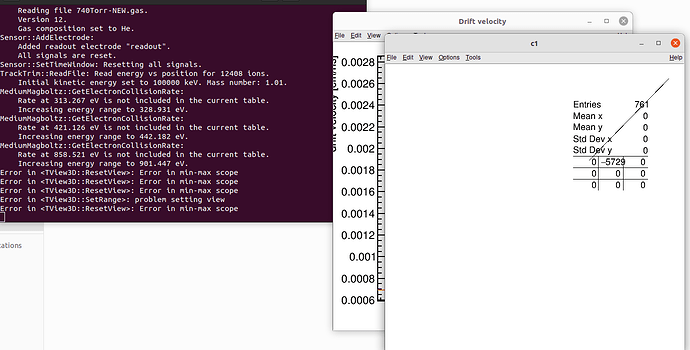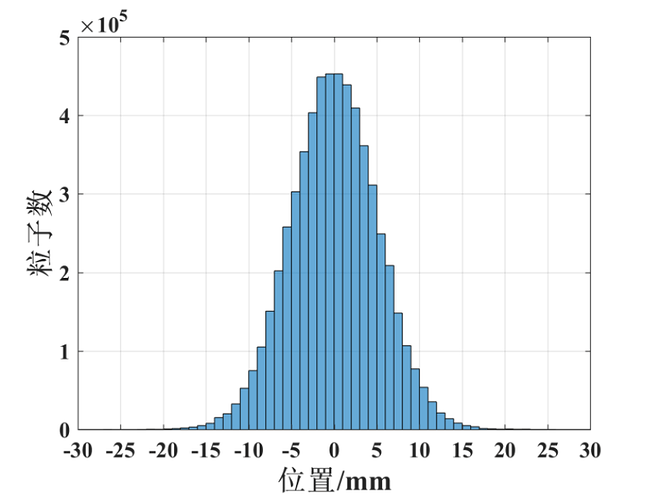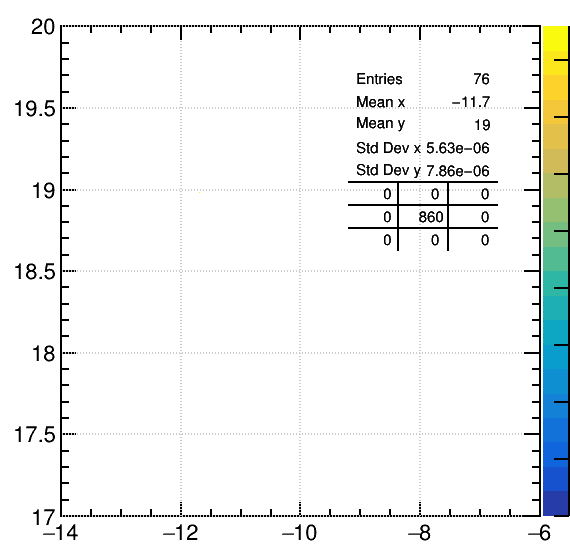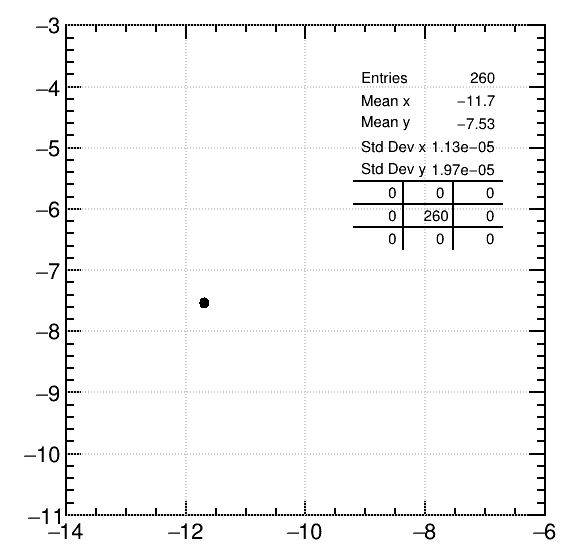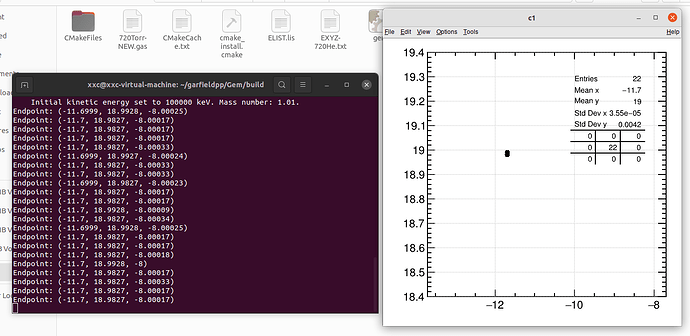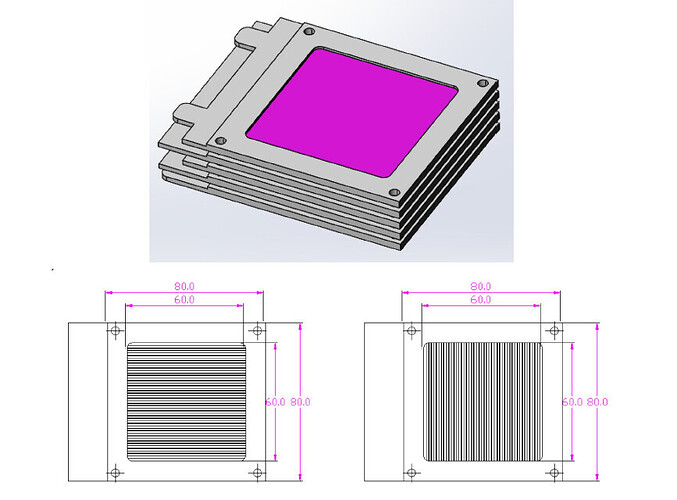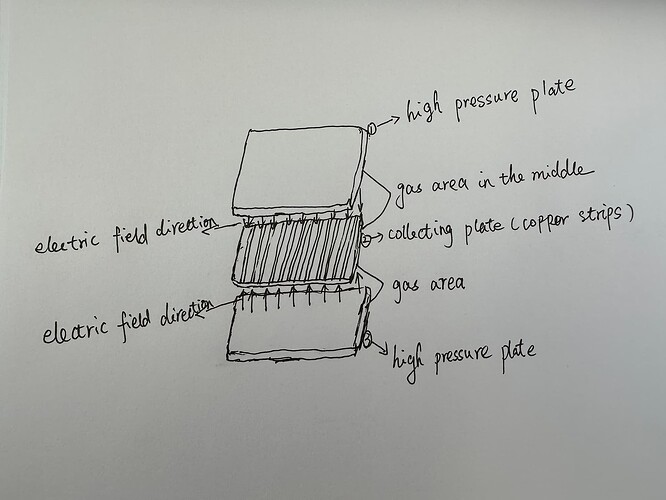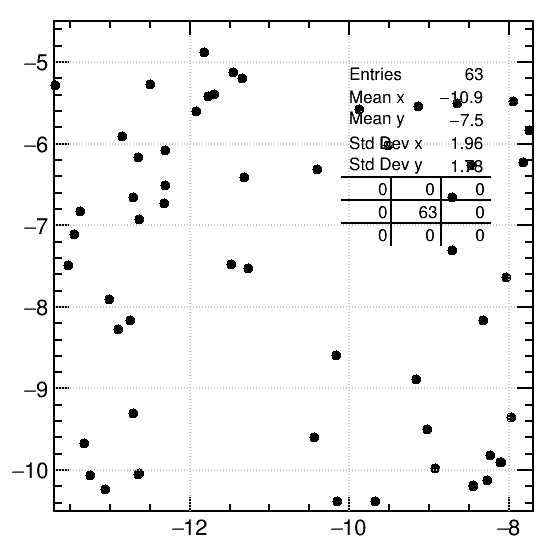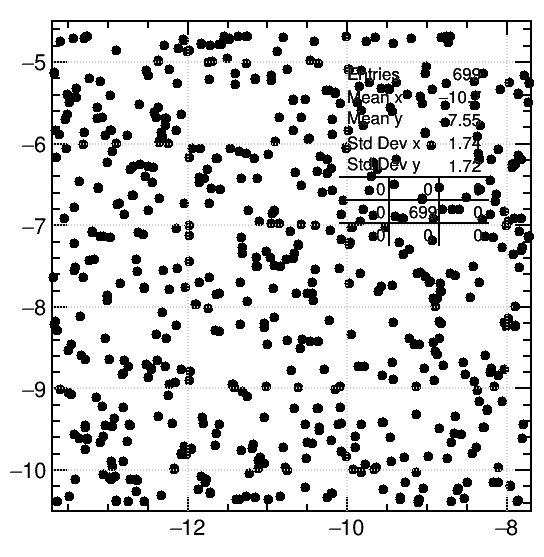After the further coding in the below
DriftLineRKF drift;
drift.SetSensor(&sensor);
drift.SetMaximumStepSize(0.01);
drift.DriftElectron(-11.7, 19.4, -7.53, 0.);
drift.GetDriftTime();
AvalancheMicroscopic aval;
aval.SetSensor(&sensor);
// Create a 2D histogram with 100 bins between -1. and 1. (same range and binning for x and y).
TH2F hHitMap("hHitMap", "Hit map", 1000, -14., -6., 1000, -11., -3.);
constexpr unsigned int nTracks = 50;
unsigned int nesum = 0;
for (unsigned int i = 0; i < nTracks; ++i) {
sensor.NewSignal();
// Simulate an ion track.
tr.NewTrack(-11.7, 19.2, -7.53, 0., 0., -1., 0.);
// Loop over the clusters.
double xc, yc, zc, tc, ec, ekin;
int ne = 0;
while (tr.GetCluster(xc, yc, zc, tc, ne, ec, ekin)) {
// Sum up the number of electron/ion pairs created.
nesum += ne;
// Simulate electron and ion drift lines starting
// from the cluster position.
// Scale the induced current by the number of electron/ion pairs
// in the cluster.
drift.SetElectronSignalScalingFactor(ne);
drift.DriftElectron(xc, yc, zc, tc);
//drift.SetIonSignalScalingFactor(ne);
//drift.DriftIon(xc, yc, zc, tc);
aval.AvalancheElectron(xc, yc, zc, tc, ec, 0, 0, 0);
for (const auto& electron : aval.GetElectrons()) {
const auto& endPoint = electron.path.back();
hHitMap.Fill(endPoint.x, endPoint.y);
}
}
}
TCanvas c1;
hHitMap.Draw("coordinate");
the result is like this
what’s the meaning of the sentence “rate at …is not included in the current table”
and how to set the min-max scope to the right range
